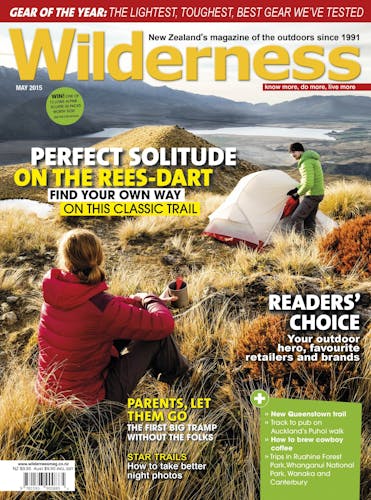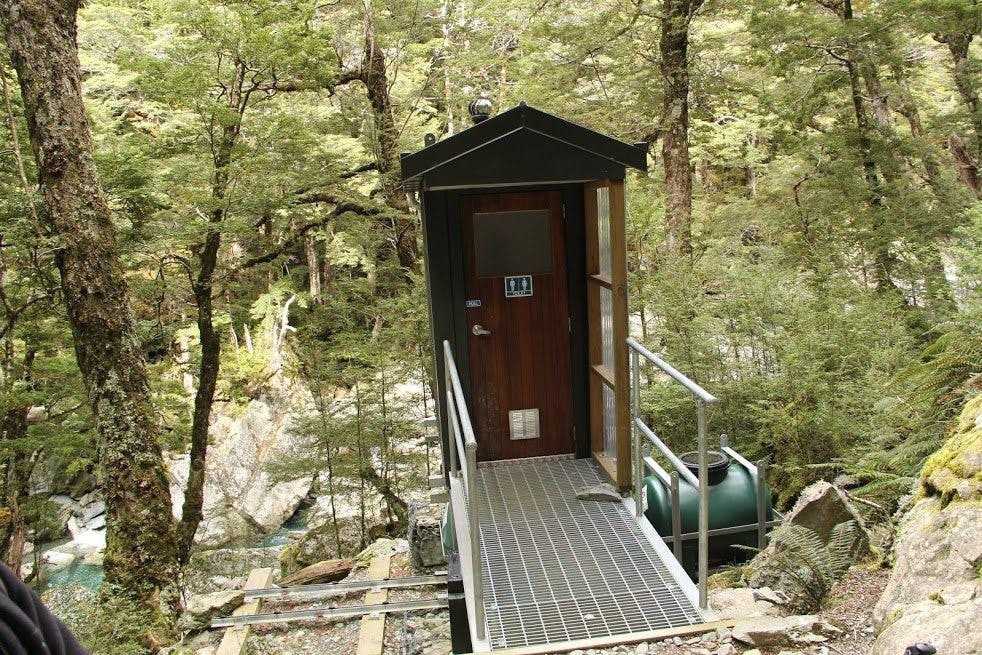Letter of the month: One of 50 peaks bagged
I am lucky enough to live close to three of our best national parks, so wealthy in choice we sometimes bicker about where to go next.
Reading ‘NZ’s 50 best tramping peaks’ (February 2015), I saw a mission we hadn’t done: Iron Hill in Kahurangi National Park.
A plan was hatched: we spent the first night on the shores of Lake Sylvester – the post-dinner walk and subsequent sunset over the distant Arthur Range absolutely spectacular.
A glorious day walking ridges can’t be beaten and the following day was no exception: kea and karearea kept us company, the views were magnificent and we found a campsite in the trees at the western end of Diamond Lake..
We spent the afternoon climbing Mt Lockett and lingering on the Lockett Range before dropping back down to the lake to watch a sunset that would be hard to beat anywhere. Next day we bagged Iron Hill, taking in the view to a slightly clagged-in Arthur Range.
A great tramp. Thanks for the inspiration to get out and go somewhere we ought to have been a long time ago.
– John Nicholls and Donna Bower, Nelson Bays
A most miserable place
The heritage value of older huts has been rightly celebrated of late and I’m an ardent supporter of retaining older huts for not only accommodation but also their symbolic legacy. However, a recent experience has led me to consider that perhaps there are some huts which would be better off dismantled and removed.
Walking down Renata Ridge in Tararua Forest Park, I was looking forward to a lunch stop at Waiotauru Hut. The web had alerted me to this hut being in a poor state, but nothing prepared me for the grim encounter it offered.
In the absence of any apparent long-drop, human defecation and toilet paper lay within a metre of the door, along with used fireworks. Inside there were large holes in the roof, offensive tagging on the walls, broken bottles and food scraps in the fireplace. There were no mattresses nor a hut book. Significantly, perhaps, this hut is accessible by off-road vehicles.
It seems disingenuous for such a hovel to be highlighted as an accommodation option on DOC’s website and through track signage. A hut, surely, is a reasonably welcoming place; neither a place of luxury nor of decrepitude. Waiotauru, however, is a most miserable place. It is obviously a hideaway for those on wheels seeking sites for wild parties. Replacement with a smaller hut well away from, rather than on, a four-wheel drive track is surely the best option.
This hut is just appalling and has been abused beyond repair. Its continued existence is counter to conservation values.
– Robin Kearns, Auckland
Cliffs on Topos
Ben Armitage (Pigeon Post, March 2015) questioned the way cliffs are indicated on LINZ topographic maps, pointing out that the cliff symbol is only usually used to indicate cliffs in predominantly flat areas and that cliffs and rock faces are indicated through contour lines in mountainous areas.
We appreciate his interest, and methods for representing cliffs are something we’ve investigated in the past. However, we found that within 1:50,000 scale maps, symbols – like that used for cliffs – can obscure other detail when used regularly in mountainous areas. At this scale contours provide greater detail and accuracy by showing both landform and, with a 20-metre rise between each contour, height in mountainous areas.
Wilderness readers may also be interested to know that the Topo 50 Map Reading Guide can be found on the map section of our website, providing context to the features of our maps. Also, we welcome feedback, and any advice on errors or suggestions can be sent to info@linz.govt.nz
– Aaron Jordan, Land Information New Zealand
Spray safe for water
I was reading the article on wilding conifers (Walkshorts, February 2015) and wondered how does the spray that is applied to the trees as well as the poisons used for rats affect the water sources nearby?
It concerns me because when tramping I often use a natural water source for drinking and cooking. Filters won’t make chemically polluted water safe to drink. If spraying wilding pines does affect the water, does DOC put up warning signs on the tracks in these areas warning against using water there?
– Penny Vann, email
Leigh-Ann Wiig from DOC responds: The herbicides DOC uses to control wilding pines are never sprayed over open water. Ground-based herbicides are applied directly to the trunks of standing weed trees well away from any water source. All herbicides used by DOC are registered and approved by the Environmental Protection Authority. Tests carried out by DOC show that residues in the soil are extremely low and there is negligible, if any, leaching into water.
In terms of rats, 1080 is biodegradable and highly soluble. It dilutes quickly and also breaks down naturally in water. Tests taken after 1080 drops show the water is safe to drink.
If applying herbicide near tracks, DOC puts up signs at the time of spraying to advise the fact but is not required to warn of potential, but highly unlikely, contamination of water by herbicides.
A public inconvenience
Recently, I completed a mountain traverse between the Rockburn and Routeburn valleys in Mt Aspiring National Park.
As I entered the Routeburn Gorge at Sapper’s Pass above Forge Flat I encountered a guided group of older-age day walkers waiting beside a toilet that had been installed beside the track above the river. The siting of the toilet in the ruggedly beautiful gorge was appalling, especially as it could have been sited discreetly at Forge Flat about ten minutes up the track.
I couldn’t restrain expressing my horror to the ladies on the side of the group as I approached.
The guide told me these groups didn’t go all the way to Routeburn Flats Hut so the toilet was needed. When I stated it could have been sited more discreetly at Forge Flat she told me that’s where they were to have lunch. To me that was another reason the toilet would have been better sited there.
To me it was like seeing a brothel beside a church; it was in bad taste and crass. Hopefully more thought and care can be taken siting such infrastructure in the future.
– Stephen Keach







